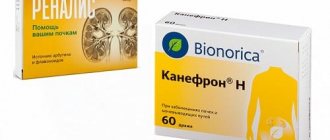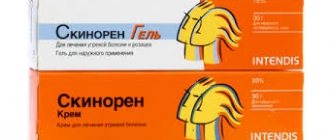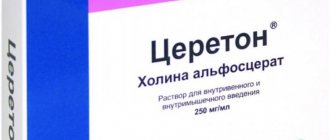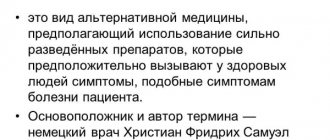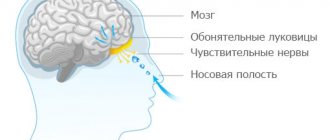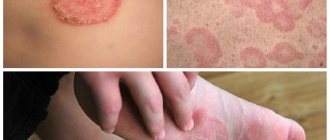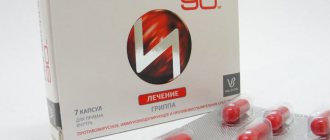Pharmacodynamics and pharmacokinetics
The drug affects the central nervous system. This is an antipsychotic drug that has a wide spectrum of action. It has antipsychotic , antiemetic and cataleptogenic effects. In addition, the drug has alpha-adrenolytic activity. Anticholinergic and sedative effects occur to a weak or moderate extent. The hypotensive and muscle-relaxing effects are weakly expressed. The neuroleptic effect is combined with a stimulating one .
The drug is also characterized by a selective effect on deficiency symptoms. Significant extrapyramidal abnormalities are possible.
Etaperazine is well absorbed from the gastrointestinal tract. Significant fluctuations in maximum plasma . Strong binding to plasma proteins. The drug is intensively broken down, mainly in the liver. Excreted through the kidneys and with bile.
Indications for use
Prescribed in therapy:
- mental disorders;
- emotional overstrain;
- schizophrenia;
- exogenous-organic psychoses;
- involutional psychoses;
- psychopathy;
- neuroses;
- unreasonable feelings of fear;
- chronic alcoholism;
- premedication;
- nausea;
- intense vomiting;
- vomiting during radiation or chemotherapy for malignant tumors;
- incessant hiccups;
- skin itching (particularly in patients suffering from mental disorders).
Can be used to increase the therapeutic effect and enhance the effect of painkillers.
Contraindications
The following contraindications to the use of this drug are known: progressive systemic diseases of the brain and spinal cord, cirrhosis , hemolytic jaundice , hematopoietic disorders, thromboembolic diseases, pregnancy , breastfeeding , hepatitis , nephritis , myxedema , decompensated heart disease , hypersensitivity to the active substance, late stages of bronchiectasis diseases .
Possible negative reactions
There is a high probability of adverse reactions occurring during therapy:
- muscle spasms;
- difficulty swallowing;
- parkinsonism;
- lethargy;
- drowsiness;
- lethargy;
- indifference to everything around, apathy;
- dizziness;
- blurred vision;
- glaucoma;
- the occurrence of a paranoid state;
- lethargy;
- feelings of constant anxiety;
- hyperactivity;
- nightmares;
- instability of blood pressure;
- increased heart rate;
- arrhythmias;
- fainting;
- nausea;
- vomiting;
- constipation/diarrhea;
- increased appetite;
- weight gain;
- painful sensations in the abdomen;
- hepatitis A;
- liver damage;
- allergic reactions;
- pale skin;
- urinary retention;
- feverish condition;
- decreased libido.
If negative reactions are detected, the dose may be adjusted by the attending physician.
Overdose
neuroleptic may occur . In such cases, the temperature often rises. coma is also possible .
The drug should be stopped immediately. Intravenous administration of Diazepam , nootropic drugs, dextrose solution , vitamins B and C is indicated. Treatment is symptomatic .
Perphenazine
International name of the medicinal substance:
Perphenazine The list of drugs containing the active substance Perphenazine is given after the description.
Pharmacological action:
Antipsychotic (neuroleptic), phenothiazine derivative;
has a sedative, antiallergic, mild anticholinergic, antiemetic, muscle relaxant, mild hypotensive and hypothermic effect, eliminates hiccups. The antipsychotic effect is due to the blockade of dopamine D2 receptors of the mesolimbic and mesocortical systems. Inhibition of dopamine receptors in the nigrostriatal zone and tubuloinfundibular region can cause extrapyramidal disorders and hyperprolactinemia. The sedative effect is due to the blockade of adrenergic receptors in the reticular formation of the brain stem; antiemetic effect - blockade of dopamine D2 receptors in the trigger zone of the vomiting center; hypothermic effect - blockade of dopamine receptors of the hypothalamus. Peripheral alpha-adrenergic blocking and H1-histamine blocking effects are manifested by arterial hypotension and antiallergic effects, respectively. It has superior antipsychotic activity to chlorpromazine. The antipsychotic effect develops after 4-7 days and reaches a maximum after 1.5-6 months (depending on the nature of the disease). Pharmacokinetics:
Well absorbed from the gastrointestinal tract. Communication with plasma proteins - 90%. Metabolized in the liver to form inactive metabolites. It is excreted mainly by the kidneys.
Indications:
Mental and emotional disorders;
premedication, nausea, vomiting (of various origins, including during radiation and chemotherapy of malignant neoplasms), hiccups, itching, chronic alcoholism; to increase the effectiveness of analgesic therapy, schizophrenia (complex treatment), exogenous-organic and involutional psychoses, psychopathy, neuroses (fear, tension). Contraindications:
Hypersensitivity, severe cardiovascular diseases (decompensated CHF, arterial hypotension), severe depression of central nervous system function and comatose states of any etiology;
brain injuries, progressive systemic diseases of the brain and spinal cord, pregnancy, lactation, childhood. With caution. Alcoholism (predisposition to hepatotoxic reactions), pathological changes in the blood (impaired hematopoiesis), breast cancer (as a result of phenothiazine-induced secretion of prolactin, the potential risk of disease progression and resistance to treatment with endocrine and cytostatic drugs increases), angle-closure glaucoma, prostatic hyperplasia with clinical manifestations , liver and/or kidney failure, peptic ulcer of the stomach and duodenum (during exacerbation); diseases accompanied by an increased risk of thromboembolic complications; Parkinson's disease (extrapyramidal effects increase); epilepsy; myxedema; chronic diseases accompanied by breathing problems (especially in children); Reye's syndrome (increased risk of hepatotoxicity in children and adolescents); cachexia, vomiting (the antiemetic effect of phenothiazines can mask vomiting associated with an overdose of other drugs). Elderly age. Side effects:
Extrapyramidal disorders: dyskinesias (paroxysmal muscle spasms of the neck, tongue, floor of the mouth, oculogyric crises), akinetic-rigid phenomena, akathisia, hyperkinesis, tremor, autonomic disorders;
drowsiness, catalepsy, decreased motivational activity, lethargy, lethargy, depression, sleep disturbances; decreased blood pressure, tachycardia, heart rhythm disturbances, ECG changes (prolongation of the QT interval, smoothing of the T wave); dyspepsia: nausea, vomiting, abdominal pain, loss of appetite; intestinal and bladder atony, hepatotoxicity, nephrotoxicity, cholestatic hepatitis, increased intraocular pressure, photosensitivity, amenorrhea, galactorrhea, decreased libido, inhibition of bone marrow hematopoiesis (agranulocytosis, leukopenia, anemia, pancytopenia), allergic reactions (skin rash, angioedema). With long-term use, tardive dyskinesia may develop, and, less commonly, neuroleptic malignant syndrome. Overdose. Symptoms: the appearance of acute neuroleptic reactions. An increase in body temperature, which may be one of the symptoms of neuroleptic malignant syndrome, should be especially alarming. In severe cases of overdose, various forms of impaired consciousness may occur, including coma. Treatment: cessation of therapy, intravenous administration of diazepam, dextrose solution, nootropic drugs, vitamins B and C, symptomatic therapy. Interaction:
Enhances the effects of anxiolytics, analgesics, drugs for general anesthesia, hypnotics, ethanol, as well as the side effects of hepato- and nephrotoxic drugs.
Reduces the effect of anorexigenic drugs (with the exception of fenfluramine). Reduces the effectiveness of the emetic effect of apomorphine, enhances its inhibitory effect on the central nervous system. Increases plasma concentrations of prolactin and interferes with the action of bromocriptine. Probucol, astemizole, cisapride, disopyramide, erythromycin, pimozide, procainamide and quinidine further prolong the QT interval, which increases the risk of developing ventricular tachycardia. When used together with tricyclic antidepressants, maprotiline, MAO inhibitors, it is possible to prolong and intensify the sedative and anticholinergic effects, with thiazide diuretics - increased hyponatremia, with Li+ drugs - decreased absorption in the gastrointestinal tract, increased rate of Li+ excretion by the kidneys, increased severity of extrapyramidal disorders, early signs of intoxication Li+ (nausea and vomiting) may be masked by the antiemetic effect of perphenazine. Combination with beta-blockers enhances the hypotensive effect, increasing the risk of developing irreversible retinopathy, arrhythmias and tardive dyskinesia. The administration of alpha and beta adrenergic agonists (epinephrine) and sympathomimetics (ephedrine) can lead to a paradoxical decrease in blood pressure. Amitriptyline, amantadine, antihistamines and other drugs with an anticholinergic effect increase anticholinergic activity. Al3+ and Mg2+-containing antacid drugs or antidiarrheal adsorbents reduce absorption. When taken simultaneously with antiepileptic drugs (including barbiturates), it reduces their effect (lowers the epileptic threshold). Antithyroid drugs increase the risk of developing agranulocytosis. Drugs that inhibit bone marrow hematopoiesis increase the risk of myelosuppression. Special instructions:
If a brain tumor or intestinal obstruction is suspected, the use of the drug is not recommended, because
the antiemetic effect may mask symptoms of intoxication and complicate diagnosis. During treatment, it is necessary to monitor liver and kidney function, peripheral blood patterns, and prothrombin index. Avoid skin contact with liquid forms of the drug - contact dermatitis may develop. During the treatment period, care must be taken when driving vehicles and engaging in other potentially hazardous activities that require increased concentration and speed of psychomotor reactions. Preparations containing the active substance Perphenazine:
Etaperazine, Etaperazine-TAT
The information provided in this section is intended for medical and pharmaceutical professionals and should not be used for self-medication. The information is provided for informational purposes only and cannot be considered official.
Interaction
Suppression of the nervous and respiratory systems increases when combined with drugs that depress the nervous system, as well as ethanol-containing drugs and ethanol .
Combination with drugs that provoke extrapyramidal reactions increases the number and frequency of extrapyramidal disorders. Fluoxetine can also cause extrapyramidal symptoms and dystonia .
Anticonvulsants may lower the seizure threshold , and medications to treat hyperthyroidism , in turn, increase the likelihood of agranulocytosis .
Interaction with drugs that cause hypotension may cause orthostatic hypotension .
Combination with drugs that have anticholinergic effects may lead to an increase in anticholinergic effect, and the antipsychotic effect of the antipsychotic may be reduced.
Concomitant use of Etaperazine with MAO inhibitors , tricyclic antidepressants and Maprotiline increases the likelihood of developing NMS . And combination with antacids , lithium salts and antiparkinsonian drugs interferes with the absorption of phenothiazines .
Interactions with amphetamines , clonidine , Epinephrine , Levodopa and Guanethidine may reduce their effect.
Combination with Ephedrine may weaken its vasoconstrictor effect.
Prescription restrictions
It is prohibited to use when:
- individual immunity of the body to the elements of the composition;
- severe depression of the central nervous system;
- organic diseases of the central nervous system;
- blood dyscrasias;
- impaired bone marrow hematopoiesis;
- subcortical brain damage;
- pathologies of the heart muscle;
- liver lesions.
strictly unacceptable to prescribe while taking barbiturates, potent analgesics, antihistamines, narcotic substances, and alcoholic beverages.
Prescribed with caution when:
- seizure disorders;
- depression (high risk of increased suicidal tendencies);
- renal failure;
- respiratory system disorders;
- acute pulmonary infections;
- ephrizema;
- asthma;
- epileptic seizures;
- glaucoma;
- prostate adenoma;
- parkinsonism.
In the treatment of children, it is permissible to prescribe small doses of the drug after reaching the age of twelve.
It is used with extreme caution in the treatment of mental disorders in pregnant and lactating women.
Instructions for use
Available in tablet form.
The daily dosage is calculated by the doctor depending on the age and diagnosis of the patient; it can range from 4 to 80 mg, divided into several doses.
In the case of a chronic form of the disease and with resistance, the dose can be increased to 400 mg.
The duration of treatment is determined individually.
